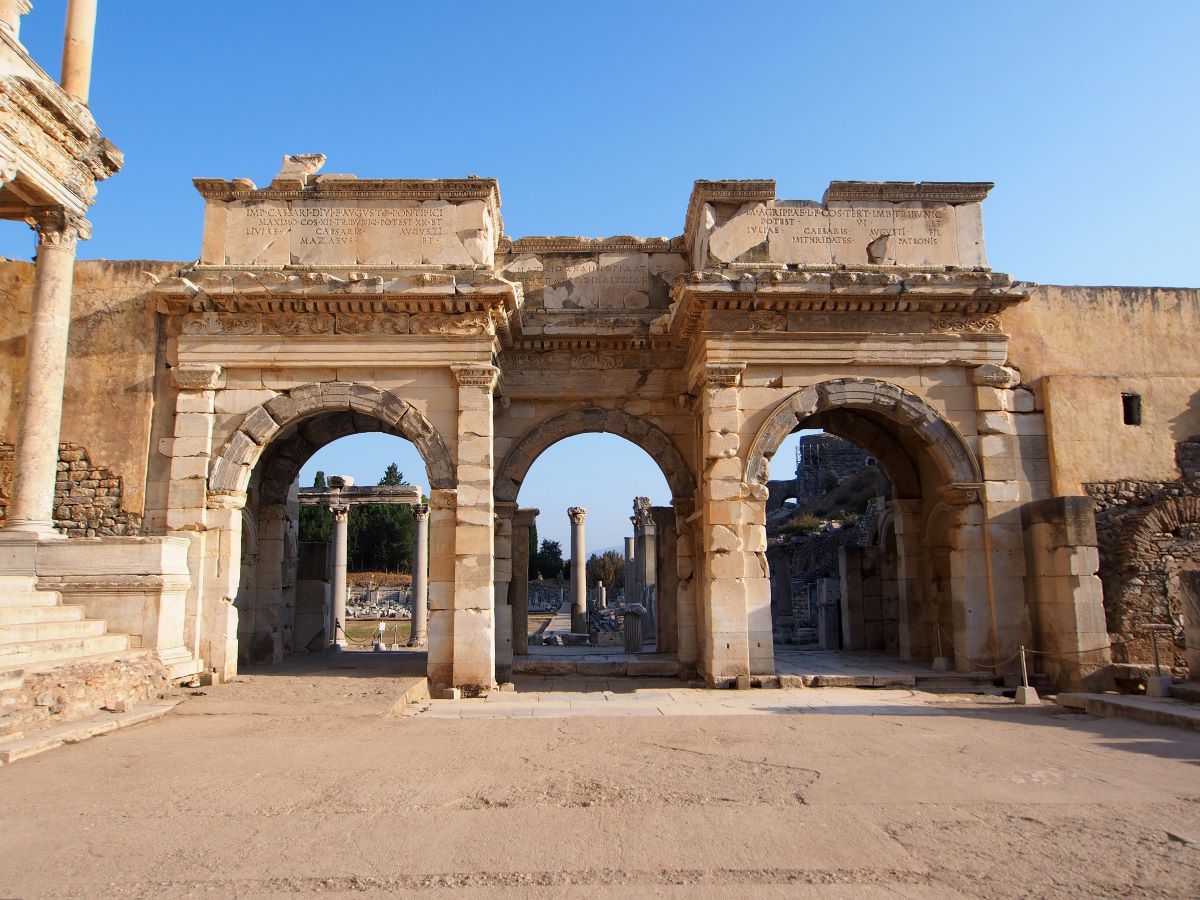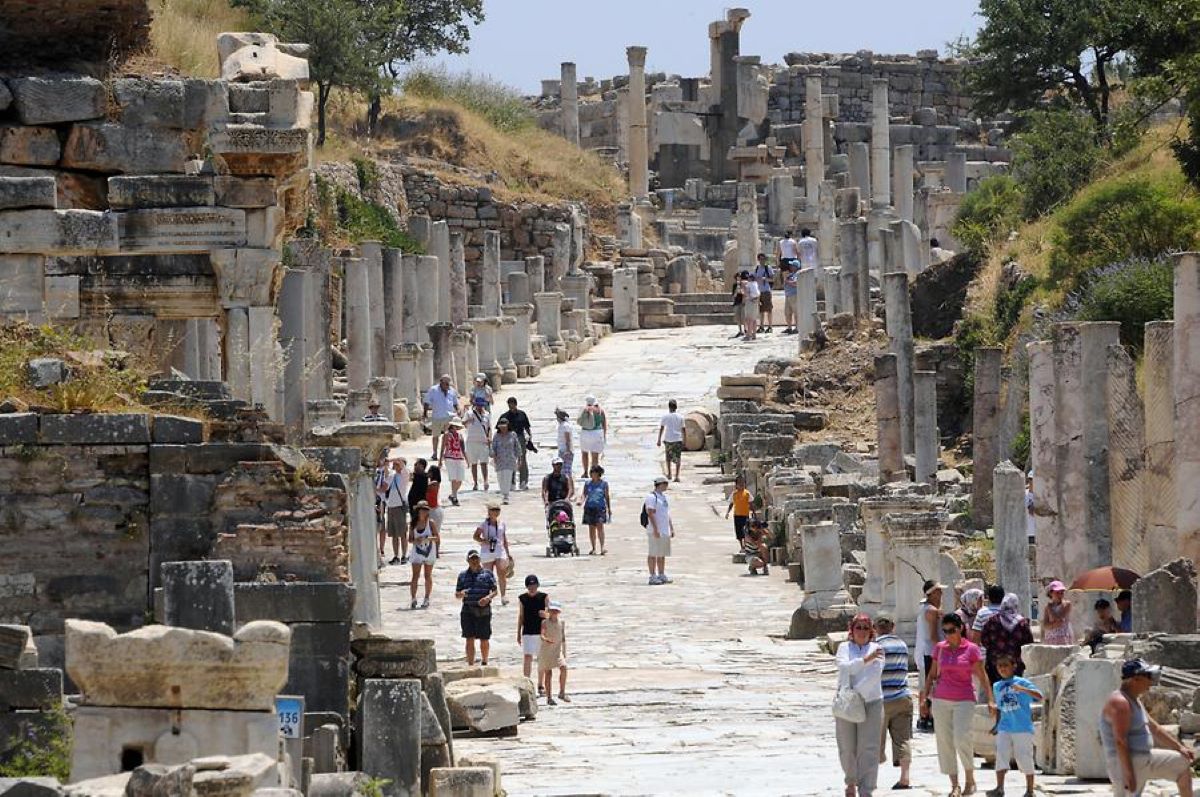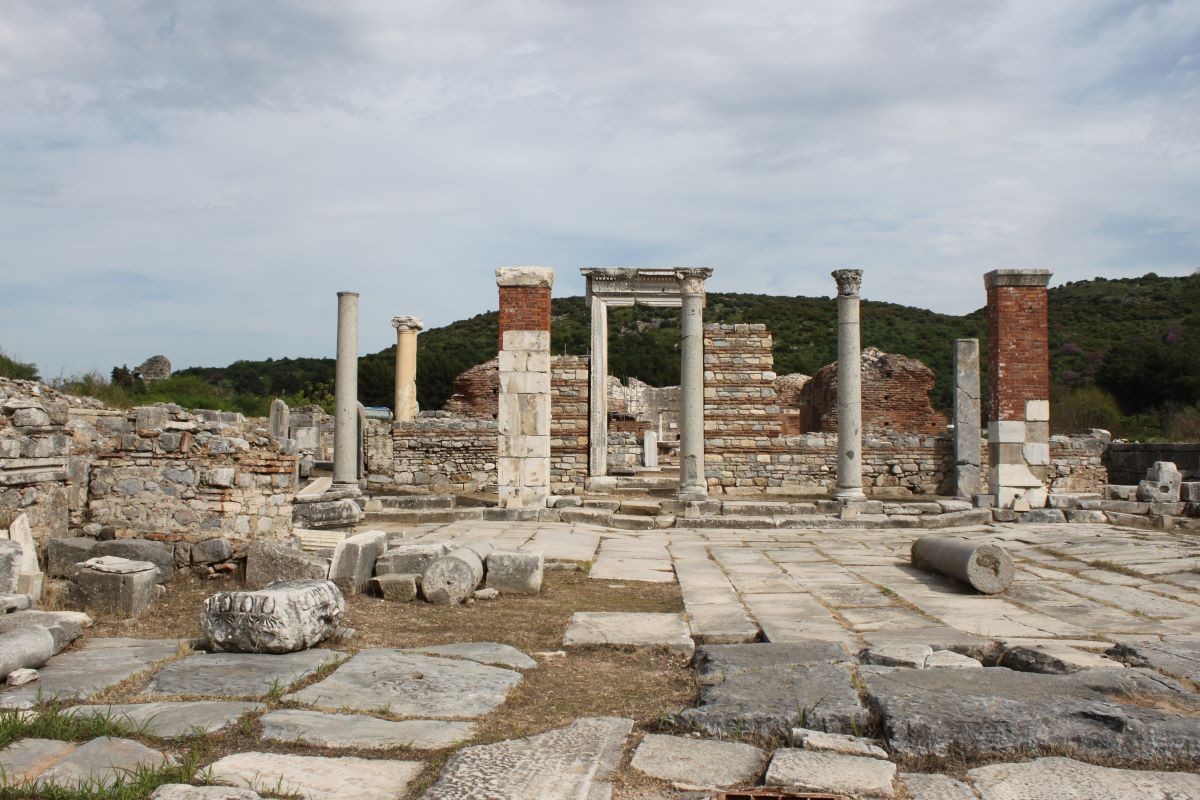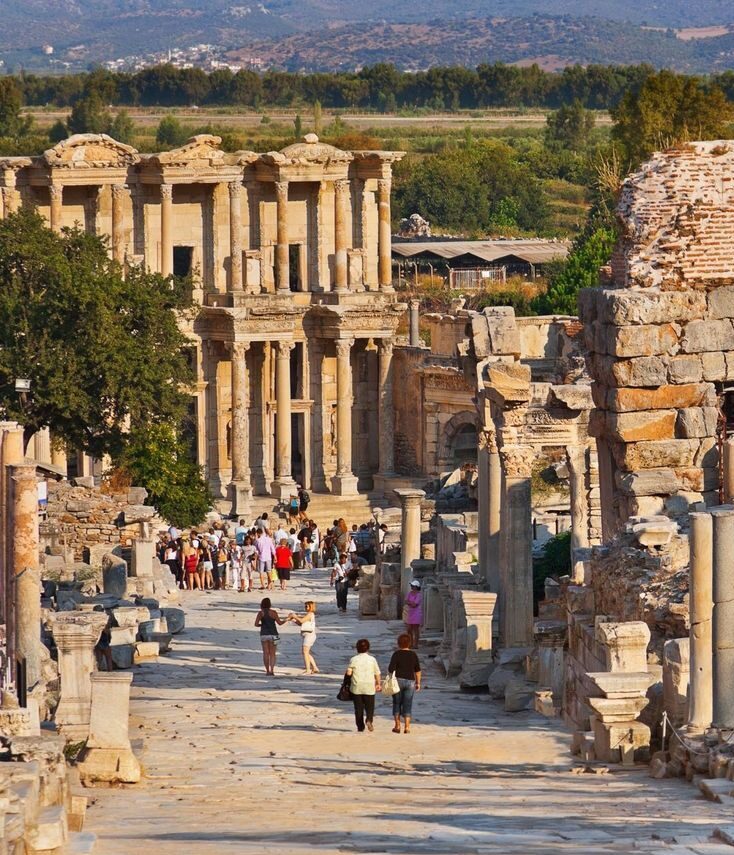The ancient city of Ephesus is a site of remarkable historical significance, with a…

Mazeus and Mithridates Gates: A Testimony to the Grandeur of Ancient Ephesus
The Gates of Mazeus and Mithridates are one of the most iconic structures in the ancient city of Ephesus. These gates are named after the architects who designed and built them, Mazeus and Mithridates, who were commissioned by the Roman Emperor Augustus in the first century BCE. The gates served as an entrance to the city’s main commercial district, and they remain a testament to the skill and ingenuity of the ancient architects who created them.
The architects Mazeus and Mithridates were renowned for their work in constructing public buildings and monuments for the Roman Empire. They were originally from the city of Samsun, located in modern-day Turkey, and they were known for their expertise in using marble and other materials in their constructions. They were hired by Augustus to design and build the Gates of Mazeus and Mithridates as part of a larger renovation project in Ephesus.
The Gates of Mazeus and Mithridates were built at the end of the first century BCE, during the reign of Augustus. The gates were constructed as part of a larger project that aimed to improve the infrastructure of Ephesus, including the construction of a new aqueduct and the renovation of the city’s theater. The gates were built to serve as the main entrance to the city’s commercial district, which was a hub of trade and commerce in the ancient world.
The Gates of Mazeus and Mithridates were built using a combination of materials, including marble and other stones. The gates were designed to be both functional and aesthetically pleasing, with intricate carvings and decorations that reflected the skill and artistry of their creators. The gates were also designed to be durable and long-lasting, using techniques such as doweling to ensure that the stones would stay in place for centuries to come.
The Gates of Mazeus and Mithridates are composed of several different structures, including a triumphal arch, two towers, and a colonnade. The triumphal arch is the largest and most prominent structure, standing over 11 meters tall and 18 meters wide. The arch is made of white marble and is decorated with intricate carvings and reliefs that depict scenes from Roman mythology and history.
The two towers that flank the triumphal arch are each over 16 meters tall and were designed to be both functional and decorative. They were originally topped with statues of the architects Mazeus and Mithridates, although these statues are no longer extant. The towers were also used as vantage points for guards who would watch over the city’s commercial district.
The colonnade that connects the two towers is made of marble and features columns with Corinthian capitals. The colonnade was designed to provide shade and shelter for people entering and leaving the commercial district, and it also served as a decorative element that enhanced the overall aesthetic appeal of the Gates of Mazeus and Mithridates.
The Gates of Mazeus and Mithridates were more than just a functional structure; they were also a symbol of the power and influence of the Roman Empire. The gates were designed to impress visitors and to reinforce the idea of Roman dominance over the city and its inhabitants. The intricate carvings and decorations that adorn the gates are a testament to the skill and artistry of the ancient architects who created them, and they continue to inspire wonder and awe in visitors today.
Despite their age, the Gates of Mazeus and Mithridates have managed to survive the test of time. While they have undergone some restoration and renovation over the centuries, they remain largely intact and are considered one of the best-preserved examples of ancient Roman architecture in the world. The gates continue to attract visitors from around the world who come to marvel at their beauty and to learn more about the fascinating history and significance of this iconic structure.
One of the most interesting features of the Gates of Mazeus and Mithridates is the intricate carvings and decorations that adorn the triumphal arch and the colonnade. These carvings depict a wide variety of scenes from Roman mythology and history, including battles, triumphs, and religious ceremonies. The carvings are a testament to the skill and artistry of the ancient architects who created them, and they provide valuable insights into the beliefs and values of the people who lived in Ephesus during the Roman era.
In addition to their decorative elements, the Gates of Mazeus and Mithridates were also designed with practical considerations in mind. The colonnade that connects the two towers provided shelter and shade for people entering and leaving the commercial district, which was particularly important during the hot summers that are common in the region. The towers themselves were also designed to be functional, with guards stationed at the top to watch over the city and to provide early warning of any potential threats.
The Gates of Mazeus and Mithridates were an important symbol of the power and influence of the Roman Empire, which was at the height of its power during the time of their construction. The gates served as a reminder of Roman dominance over the city and its inhabitants, and they were designed to impress visitors and to inspire awe and admiration. Today, the gates continue to be a popular tourist attraction and are considered one of the best-preserved examples of ancient Roman architecture in the world.
In recent years, there has been a renewed interest in the Gates of Mazeus and Mithridates, both from historians and from the general public. Archaeologists have conducted extensive research on the structure, using advanced technologies such as 3D scanning and digital modeling to gain new insights into its construction and design. This research has helped to shed new light on the role of the gates in ancient Ephesus and has provided a deeper understanding of the skills and techniques used by the ancient architects who created them.
The Gates of Mazeus and Mithridates are a testament to the enduring legacy of ancient Rome and its impact on the world. These gates, which were designed and built over 2,000 years ago, continue to fascinate and inspire people from all over the world. They are a reminder of the incredible achievements of the ancient architects who created them, and they provide valuable insights into the history and culture of the people who lived in Ephesus during the Roman era. Whether you are a history buff or simply someone who appreciates beautiful architecture, the Gates of Mazeus and Mithridates are definitely worth a visit.




This Post Has 0 Comments